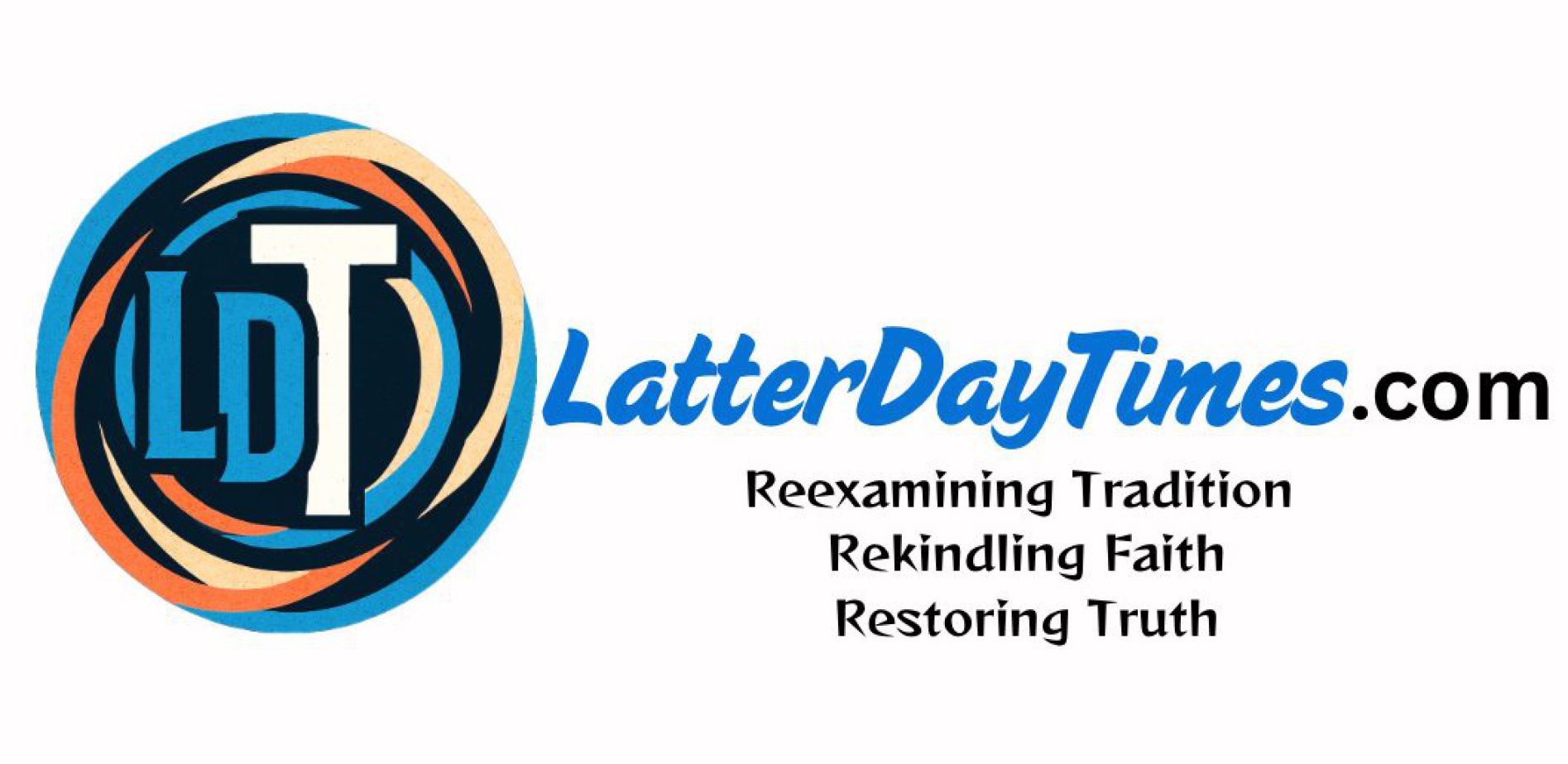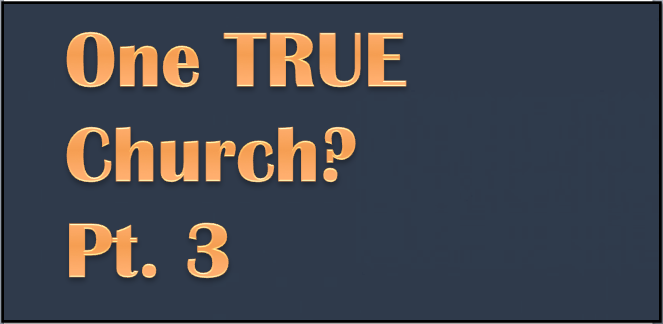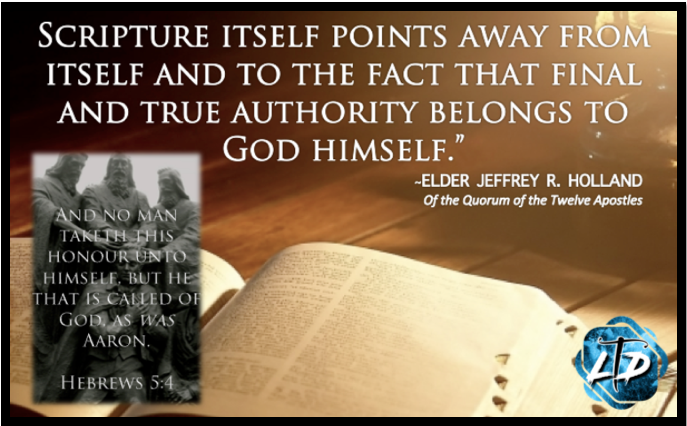Pt. 3 – God’s Word and the Unpopular Notion of “One True Church”
The following is part three of this three-part series. For part one click here. For part two click here.
A recent Newsmax article highlighted an of era American history that has been the subject of parts one and two, that of the First and Second Great Awakenings. These periods of religious reform heavily influenced the makeup of American life and culture and I don’t know if Christians today, let alone non-believers, appreciate the attitudes and the quest for truth this period spawned.
The appreciation of the availability of the Bible and the increase in literacy, in general, have taken a backseat to the rise in secularism and biblical illiteracy and indifference. Religion and scripture are often characterized as a source of violence and associated with a backwardness secularist wish to cast into the dustbin of history. Regardless of what non-believers feel, believers might rightly reflect on this period and what it means for Christianity going forward.
What follows below will continue the narrative that began in part one. The question before us is how one true faith might exist among so many well-intentioned traditions? Among the faith traditions that were birthed in America, as summarized by Newsmax, was the Restoration movement. This consisted of those who wished to simply be called Christian and or Disciples of Christ, with Thomas Campbell as a notable leader in this development. Elias Smith and Barton Stone were also among those who repudiated the organized religions of their day that originated in Europe (such as the Anglican, Methodist, or Lutheran Churches). “Restoration” intended to preach a pure Christianity from the New Testament and to discard any developments not explicitly laid out in the Bible that came after the first century and those that have been adopted since.
Historian Paul K. Conkin, of Vanderbilt University and author of American Originals: Homemade Varieties of Christianity, demonstrated the fragmentation of the restoration movement, which consists of the Churches of Christ, the Disciples of Christ, and the United Church of Christ, otherwise known as the unofficial “Undenominational Fellowship of Christian Churches and Churches of Christ” (CCCC). Their history consisted of various scriptural interpretations, conferences, and a desire for unity – with a very loose organization – which resulted in fragmentation and separation. This segment of the restoration movement relied on the ideas of these men and their committees as a vehicle for restoring Christianity.
The same can not be said for the Church of Jesus Christ of Latter-day Saints.
Apostasy and Restoration – An Ancient Pattern
In part two of this three-part post, we took a glimpse at the various forms of Christianity that broke away from the Catholic Church. While it may be an unpopular notion that a single truth church exists today or even that one has ever existed, this section explores a common pattern in which God expressed this position time and time again.
Given the memory of the Catholic Church inherited by these reformers, priesthood authority took a back seat to the emphasis on spiritual gifts, end times prophecy, and a personal relationship with God. Arguably, Latter-day Saints harmonized these characteristics alongside priesthood authority – a pure restoration directed by God and not by committee.
To highlight the period of darkness that preceded the flood of enthusiasm (discussed in part two), William Tyndale, a pioneer in the English translation of the Bible, commented to a Gloucestershire cleric that:
“If God spare my life, ere many years I will cause a boy that driveth the plough shall know more of the scripture than thou dost.”
Now that we have a clear picture of the times that Tyndale and Williams experienced in regards to the intellect, general literacy, and the comprehension of scripture, we might rightly ask, did anyone hold the priesthood of God as described in the Bible in their day just as the prophets and apostles of old? Did they even understand the significance of such a question? It is one thing to be able to read, comprehend, and even speak to a large crowd with an educated and charismatic voice, but it is something entirely to receive authority from God. Given the memory of the Catholic Church inherited by these reformers, priesthood authority took a back seat to the emphasis on spiritual gifts, end times prophecy, and a personal relationship with God. Arguably, Latter-day Saints harmonized these characteristics alongside priesthood authority – a pure restoration directed by God and not by committee.
First, we must inquire how authority was given anciently and passed down. That is the theme of what follows. Secondly, we must ask if the authority of God ceased with the Apostles in the 1st Century? This is the claim of the Church of Jesus Christ of Latter-day Saints.
With a close examination, it is not hard to find examples when such authority ceased for a time until God again called another prophet and bestowed His power upon His servants. Most are familiar, whether they realize it or not, with a pattern found in the Old Testament – what I refer to as the “God Pattern” in Day of Defense.
To elaborate on a few examples, recall God calling Noah and covenanting with him after wickedness prevailed in the earth (Genesis 6:5, 8), later covenanting with Abraham, and again after centuries, calling Moses to His work via burning bush to reestablish the covenant made with Abraham, Isaac, and Jacob. Moses was then given authority to bestow the administrative powers upon his brother Aaron and upon the Levite priests.
With this list of dispensations in mind, it should be no surprise to the Bible believer that such an apostasy, or loss of the priesthood, happened again at the end of the New Testament. One exception to this acknowledgment is with Catholicism – who claim an unbroken tie to the original apostles – but again history is lacking in any clear Peter-to-pope transition. Day of Defense elaborates on the conditions of the New Testament Church and the warnings noted about apostasy.
Presuming Authority
Throughout Biblical history, God has shown Himself to be a God of order. Below are three more detailed examples in the Old Testament of God’s order regarding the administration of the priesthood.
First, a dissenting group of Israelites, while wondering in the wilderness after escaping from Egypt, decided that they too should hold the priesthood of God (Numbers 16: 3, 10, 30), presuming that Moses held too much authority. In the story of Korah’s rebellion, Moses remarked that “Hereby ye shall know that the Lord hath sent me to do all these works; for I have not done them of mine own mind” (Numbers 16:28). In verse 30 it described Korah and his followers as provokers of the Lord.
Second, we see Saul in 1 Samuel 13, captain of the Israelites taking it upon himself to offer a burnt offering to the Lord, a priesthood ordinance. Saul is then rebuked by the prophet Samuel asked, “What hast thou done?” Saul responded, “I have not made supplication unto the Lord: I forced myself, and offered a burnt offering.” Samuel continued, “Thou hast done foolishly: thou has not kept the commandment of the Lord thy God, which he commanded thee” (1 Samuel 13:11-13).
Third, Uzziah the King is told in 2 Chronicles 26:18, “It appertaineth not unto thee, Uzziah, to burn incense unto the Lord, but to the priests of the sons of Aaron, that are consecrated to burn incense: go out of the sanctuary; for thou has trespassed; neither shall it be for thine honour from the Lord God.”
These three examples show the order and sanctity of the holy priesthood. Moses, Samuel, and the sons of Aaron were all men called of God, whether through vision or an unbroken succession, and all were given a similar responsibility over the affairs of God’s faith, much like the keys of the kingdom Christ gave to Peter in the 1st Century. This patterned picked up with the young boy, Joseph Smith, Jr. in upstate New York during the early nineteenth century.
A Unique Claim tied to the New Testament
The death of Christ’s apostles resulted in a loss of or removal of God’s authority. It would take European protesters nearly 1500 years to realize this loss of authority and ultimately reject the doctrines and administration of the Catholic Church.
As authority is explained in both the Old and New Testaments, you should expect at some point to see an event or a faith system receive the Biblically prescribed means to administer the affairs of the Church after 1500 years. So where did Protestants receive it? Perhaps they were the means to an end, not the end itself, and a vehicle that opened the door for the freedom of religious expression, and ultimately the Restoration through the prophet Joseph Smith.
Of the major Christian groups that came out of the Second Great Awakening, “Mormonism”, or the Church of Jesus Christ of Latter-day Saints, is unique among its peers. At no time since the New Testament have men claimed their authority to be received directly from the hand of God through His servants, especially via epiphany and from those who previously held it (Catholicism again, is the exception).
In 1829 John the Baptist and Peter, James, and John appeared to Joseph Smith (fulfilling the hopes of Roger Williams) and gave Smith the priesthood and authority they were given anciently. Smith bestowed this power upon some of his peers, creating a modern-day quorum of twelve apostles and other church offices that continue unbroken to this day.
Priesthood Operation in the New Testament
But what about that teaching in Hebrews 1: 1-2, that God had spoken to prophets in past times, and has now spoken to us through His son? What does the New Testament actually teach about the priesthood, authority, and administering in the Church? A keystone attribute of the New Testament Church was the Apostle’s authority to ‘lay hands’ (Hebrews 6:2) on individuals to bestow upon them the authority needed to administer in their respective roles in the Lord’s Church. Laying hands is also recorded in many cases to heal the sick.
Sufficient scripture describes the laying on of hands as a function to maintain order in church organization and administration. Christ called and gave power to his twelve (Matthew 10:1, Luke 9:1). In Luke 10:1 Christ calls Seventy elders and sent them two by two, no doubt with authority and power in the Church’s administration. Seventy elders are also mentioned in in Exodus 24:1, 9; Numbers 11:16, and Ezekiel 8:11, illustrating the order and authority that existed in the Old Testament administration. This office of Seventies exists uniquely today in the LDS Church.
Continuing, in John 15:16 Christ says, “Ye have not chosen me, but I have chosen you, and ordained you.” Acts of the Apostles chapter 6 carefully noted that ‘whom may we appoint over his business’ (verse 3) and ‘to the ministry of the word’ (verse 4) in the case where Stephen is chosen to the administration. Yet, he first and foremost had hands laid on him and then he received this authority (verse 6).
Further, in 1 Timothy 5:22 Paul says to ‘lay hands suddenly on no man’, expressing to show order and consideration when laying hands. Again, Paul exhorts Timothy in 1 Timothy 4:14 to ‘Neglect not the gift that in thee, which has was given thee by prophecy, with the laying on of hands.’
Lastly, the Hebrews are taught about the administration that “no man taketh this honour unto himself, but he that is called of God, as was Aaron” (Hebrews 5:4). Aaron, of course, was called of God through Moses, who laid hands on him giving him partial authority to administer in his role (Exodus 28:1).
A Power That Can Not Be Purchased or Assumed
Similar to the earlier examples from the Old Testament, the New Testament also provide evidence of individuals trying to usurp or acquire the priesthood power without going through the proper channels. One individual referred to as Simon, asks the Apostles to sell him their power in Acts 8:18-23. He, of course, is refused and told that “thou has thought that the gift of God may be purchased with money.” In another account between some ‘vagabond Jews,’ the sons of a Jew named Sceva attempt to cast out an evil spirit (Acts 19:13). This evil spirit responded that he knew Paul and Jesus, but not these and prevailed against them (Acts 19: 13-16). Presumably, this is an illustration of one attempting to act in God’s name without having authority given to them.
I fail to find any known admission in the scriptures of ending this order of administration.
Upon the death of Judas, the remaining eleven apostles prayed and cast lots to choose the next apostle (Acts 1: 23-26). Matthias was chosen and the office of Twelve Apostles continued. Unfortunately, all the details of when or whose vacancies become open, and why, is lost in history. The scriptures tell that Paul, Barnabus, and James, the brother of Jesus, were also called to be apostles (1 Corinthians 1:1; Acts 14:14; Galatians 1:19).
Again, mainstream Christians demand such an organization was limited to the New Testament. I fail to find any known admission in the scriptures of ending this order of administration, with the exception of an acknowledgment that God spoke to the previous generations through the prophets and had in their day walked among men in the flesh. Either Hebrews chapter 1 means that God ceased the calling of prophets, or the office of apostles and prophets were meant to continue as vacancies came open through the centuries. History records the last prophets and apostles were those in the 1st Century. In other words, the authority vanished from the pages of history. Fortunately, the understanding and significance of this authority persisted in the written text and was soon assumed by Catholic clergy a few centuries afterward.
Conclusion
Finally, it appears that Bible believers must acknowledge the crossroads before us. One, either the Catholic Church is a continuation of the original church. Two, we risk rejecting this very real and very significant pattern of Biblical administration if we are to accept a form Protestantism or Evangelical/non-denominational Christianity. An alternative to these two choices is to explore the Church of Jesus Christ of Latter-day Saints and their unique claim of modern prophets and apostles.
In the Lord’s ministry no college degree is required.
If there is any doubt whether or not Latter-day Saints are Christian, the narrative one receives from their “mainline” Christian pastors and preachers is not the best source of information. Like capitalism, much of the market of Christianity is driven by a system of paid preachers. The Church of Jesus Christ is volunteer-based and therefore presents a conflict of interest for pastors to befriend the so-called “un-Christian cult.”
In the Lord’s ministry, no college degree is required. Some may counterfeit it, but the power of God cannot be purchased. What motivates the Christian’s reluctance to accept that God has given more to man in our day? Does the Bible counsel against such a proposition?
If this information is helpful to you and you would like to know more, the Church of Jesus Christ of Latter-day Saints has full-time missionaries all over the world and in your area. To contact them, visit: https://www.comeuntochrist.org/beliefs/missionaries/missionaries-request or you can like my Facebook page and converse with me there. You can also purchase my book ‘Day of Defense: Positive Talking Points for the Latter Days‘ if the information above intrigued you to want to know more.
Notes:
Bryant, William Cullen. Picturesque America, or the Land We Live In, volume one. New York: Appleton, 1872. Pg. 502.
Conkin, Paul K. American Originals: Homemade Varieties of Christianity. Chapel Hill, NC: The University of North Carolina Press, 1997.
Scott Thormaehlen received his Master’s in History in 2016 and taught U.S. History in the Lone Star College system in Houston, Texas and for Alvin Community College. His writings have appeared in Accuracy in Academia, the Journal of Multidisciplinary Studies at Sam Houston State University, LDS Living, Meridian Magazine, and East Texas History – a project by Sam Houston State University.



